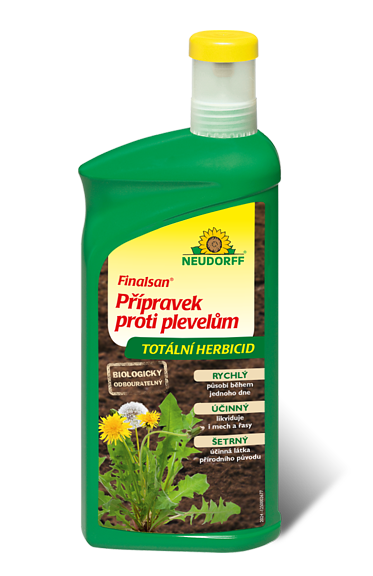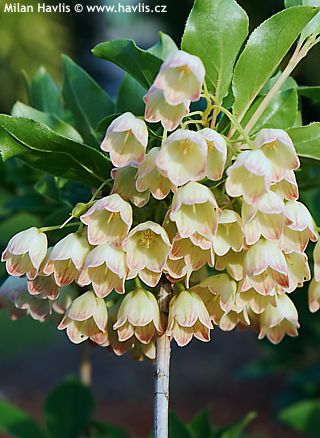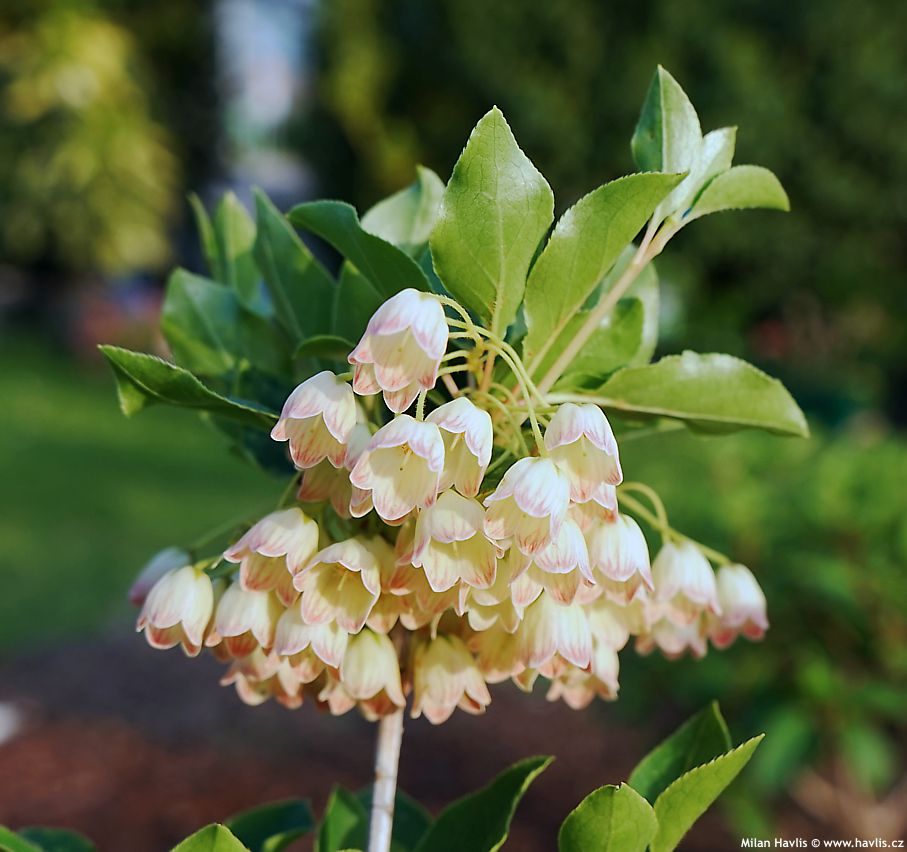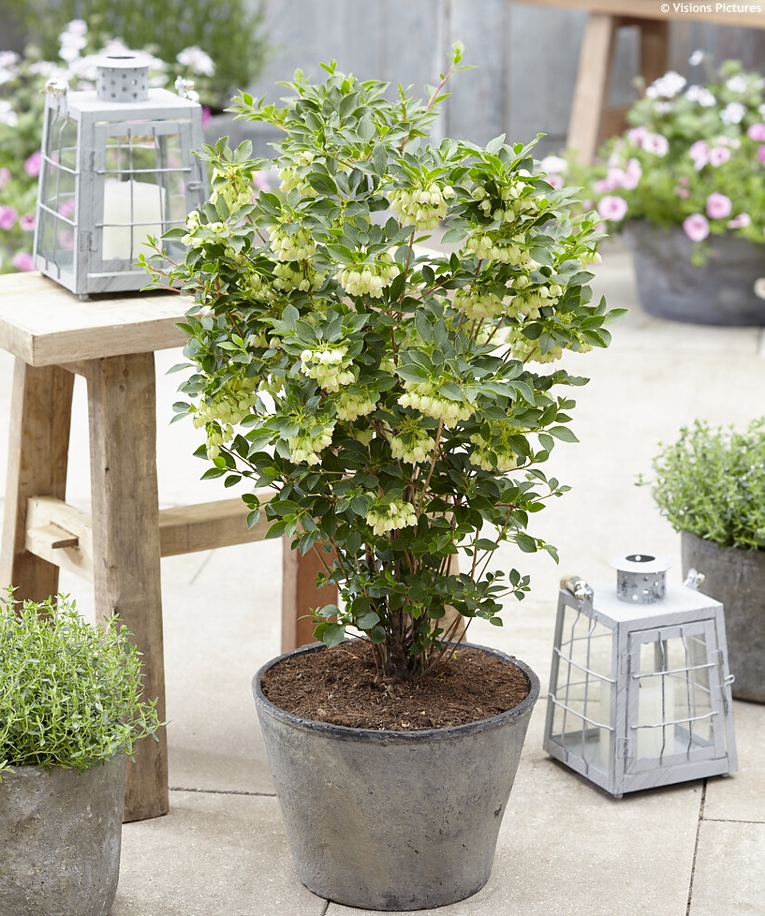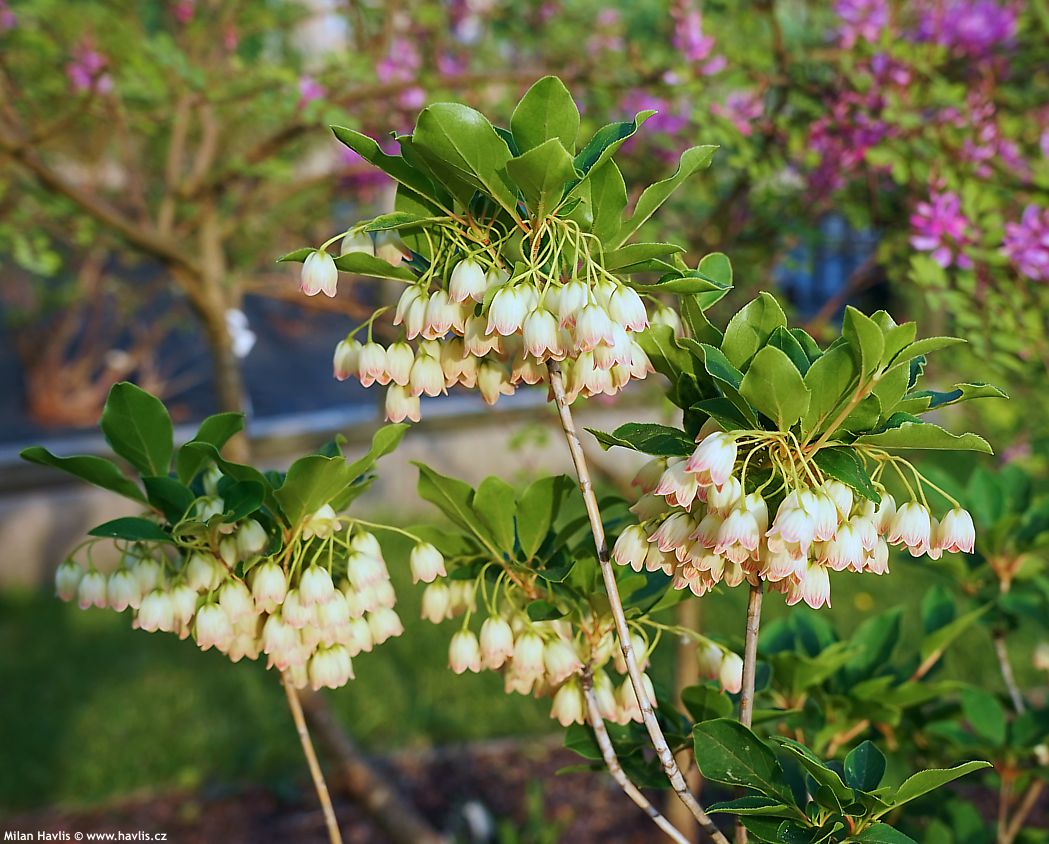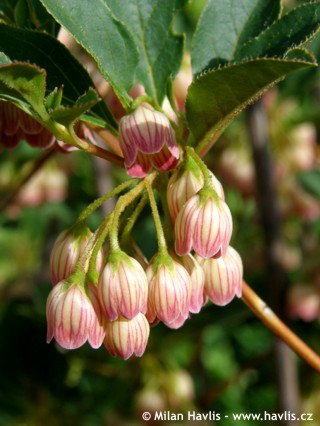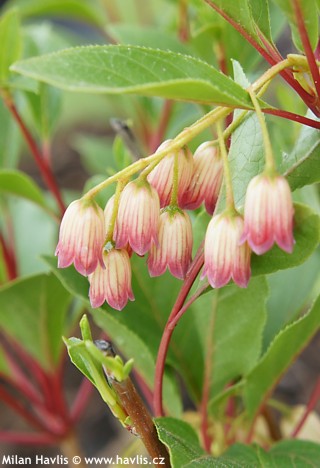Enkianthus campanulatus 'Jww10' PRETTYCOAT red-vein
Enkianthus
Latin name enkianthus was made up from two Greek words: enkyos (pregnant) and anthos (flower) although this deciduous shrub originates in Japan. It belongs to the heath family where it fits perfectly if you are making a heath garden at home. No other rhododendron or azalea has its habit. Its main stems are always fully vertical with tops of small, alternate leaves.
PRETTYCOAT is a unique variety of red-vein producing cute, little, bell-shaped, creamy flowers which almost lack pink margins. They show prominent maroon veins which meet at the very bottom of the bells and hang underneath the umbrella of leaves. Flowering begins in mid spring and deadheading of spent flowers is said to increase the number of flowers on young plants, however, we never do it and our shrubs are beautiful and flower abundantly every year. Apart from its beautiful flowers, red-vein is renowned for its other feature: the autumn colour.
The leaves are deciduous, broadly elliptic, medium green, and before they fall off, they turn several shades or red and orange if grown on acid soils. PRETTYCOAT is a more compact variety reaching about two meters in maturity. It was selected by Jan-Willem Wezelenburg in his nursery in the Netherlands. It was introduced in 2018 and European plant patent No. EU 55280 was granted in 2020.
Red-vein does not require any care or pruning. Still, if your plant produces branches that for some reason went bananas and grew too long (usually due to excess fertilizing or watering), you can trim them. Mature plants can be kept compact by regular pruning immediately after flowering.
Give it fully acidic, fertile soil that will always be moist but do not allow the plant to stand in water, and a sunny spot. It can take part-shade, too. Fully hardy to about -34 °C (USDA zone 4).
Last update 05-06-2023






























